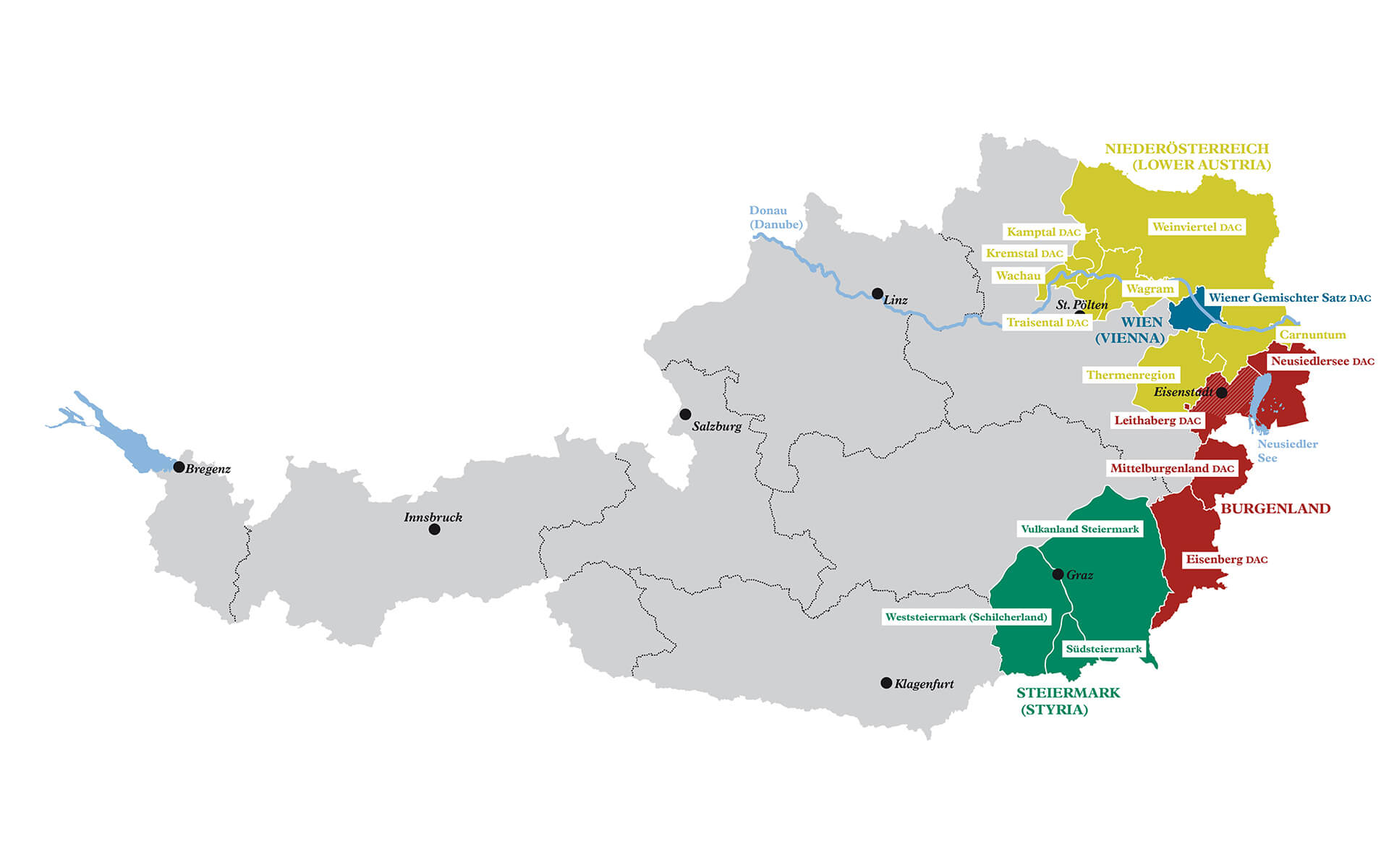Have you always wanted to visit an Austrian or German vineyard? While we aren’t giving out plane tickets, we at Cork have the next best thing. On December 10 we’ll be hosting our next Fall Wine School Series which takes attendees on a tour of Austria and Germany. The event will begin at 7 p.m.
But before you head to the event, why not familiarize yourself with the regions? Trust us, you’ll be the star of the class.
Austria’s Role in the Wine World
It’s not just the Sound of Music that the hills are alive for. According to Wine Enthusiast, the country has made its name in the wine industry from one particular varietal, Grüner Veltliner.
The light-bodied, dry white wine is a favorite year-round. With flavors of green pepper and lime, some wine connoisseurs even note hints of nut and spice flavors. The wine pairs well with richly flavored dishes like white asparagus with brown butter sauce.
The region also produces Blaufränkisch, Zweigelt, and St. Laurent.
Geographical notes
Given its size and that most of the wine producers are small estate-grown, Austria produces approximately less than a quarter of California’s entire output. To put it into perspective, California produced 716,309,505 gallons of wine in 2017.
So where does Austrian wine come from?
Its wine county is divided into three regions: Niederösterreich, Vienna, and Burgenland which breaks into the smaller regions of Steiermark.

Most of the wine is produced in Niederösterreich, the home of 60% of Austria’s vineyards. Vienna has 1,574 acres of vineyard while Burgenland has 28% of vineyard surface. Steiermark only amounts to 10% of Austria’s vineyard.
For now, we’ll say Schönen Tag and take a look at Germany.
White wines of Germany a crowd pleaser
Most German wines are associated with the varietal Riesling, one of the top white grapes in the world. However, Germany is also the 3rd largest producer of Pinot Noir.
According to Truly Fine Wine, “Germany has one of the longest ripening windows for grapes in the world, which allows nature to impart a perfect sugar and acid ratio, providing for optimum balance and harmony, along with age worthiness.”
German Wine-Growing Regions
Germany has 13 district wine-growing regions. Let’s take a look:
- Ahr: One of the smallest wine regions, extending only 14.9 miles.
- Baden: This is the southernmost of Germany’s wine regions.
- Franken: Wines produced here are considered more masculine, meaning full-bodied.
- Hessische Bergstraße: Riesling and Grauburgunder vines are most commonly grown here.
- Mittelrhein: Approximately three-quarters of the vineyards here are planted with the Riesling grape.
- Mosel: With vineyards along the river, each wine produced here share a similar flavor palette of spring blossoms and fruity acidity with a pale color and light body.
- Nahe: One of the smaller wine regions but it’s unique soil produces diverse wines.
- Pfalz: Germany’s second largest wine region in acreage and largest yield of crops.
- Rheingau: Predominate varietals here include the Riesling and the Spätburgunder.
- Rheinhessen: This is the largest wine-growing region.
- Saale-Unstrut: Vines have been cultivated since AD 998 on the hillsides lining the Saale and the Unstrut rivers.
- Sachsen: This is one of the smallest wine-growing regions.
- Württemberg: This is considered Germany’s premier red wine region.
GERMAN WINE MAP:

Ready to learn more?
Join us for the next fall wine series!
Ready to take a tour of Austria and Germany without leaving NEPA? Join us at the Fall Wine School Series on Dec. 10. Come explore these cold climate regions and their bounty of great varietals ranging from whites to reds. Reservations are required for this event, so make sure you secure your table today. We hope to see you there!
We look forward to serving you at all of our fine establishments: